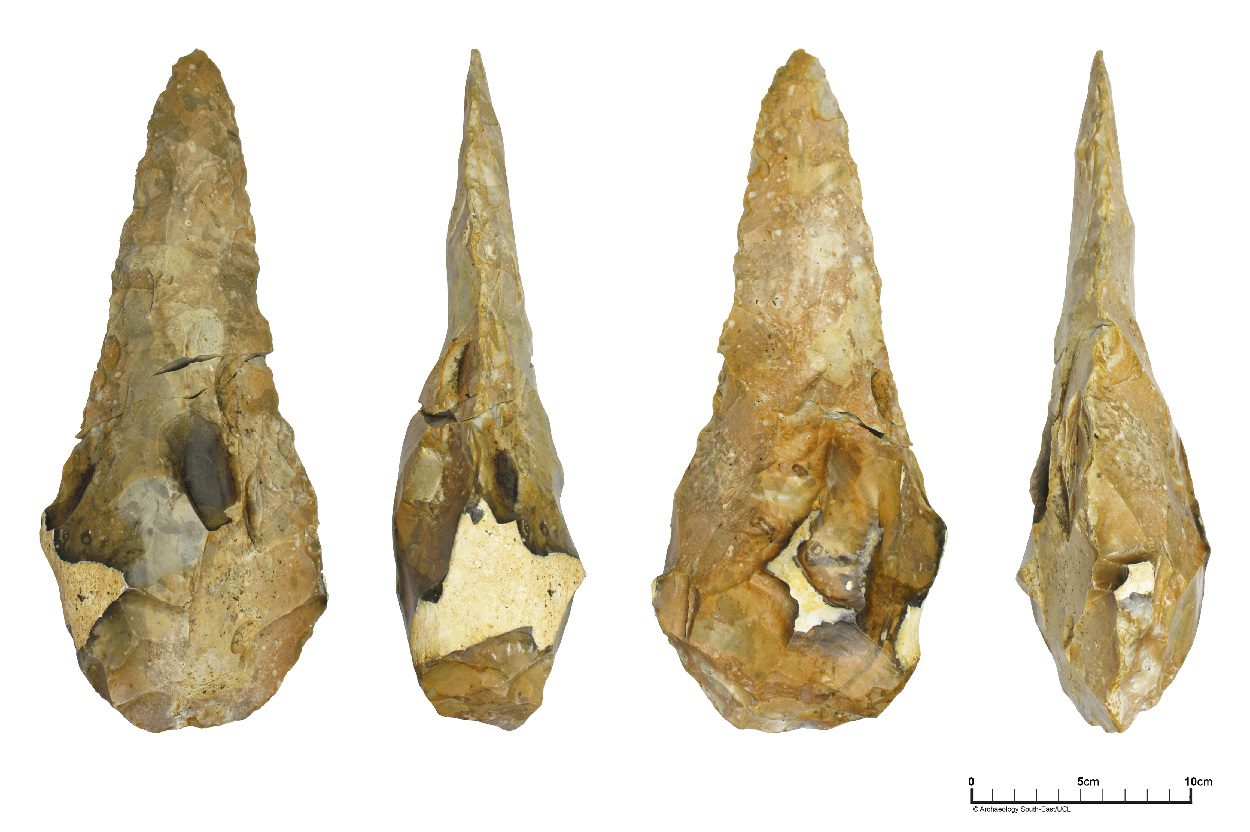Archaeologists from University College London (UCL) have uncovered “giant” prehistoric stone handaxes during excavations of an Ice Age site in Kent, England.
The discovery was made in advance of the development of the Maritime Academy School in Frindsbury, revealing Ice Age sediments preserved on a hillside above the Medway Valley. The sediments are from a filled in sinkhole and river channel, where the researchers found 800 stone artefacts dated to around 300,000-years-ago.
The Medway Valley at this time would have been a wild landscape of wooded hills and river valleys, inhabited by red deer and horses, as well as less familiar mammals such as the now-extinct straight-tusked elephant and lion. During this period, Neanderthal people were beginning to emerge in prehistoric Britain, and may have shared the landscape with other early human species.
Among the collection of finds are two “giant” hand axes made from flint, which according to a study published in the journal Internet Archaeology, are among the largest stone tools from the Palaeolithic period found in Britain.

The largest of the two handaxes measures 29.5 centimetres in length, comparable to similar examples previously found in the Thames and Medway regions. Letty Ingrey from the UCL Institute of Archaeology, said: “These handaxes are so big that it’s difficult to imagine how they could have been easily held and used. Perhaps they fulfilled a less practical or more symbolic function than other tools, a clear demonstration of strength and skill.”
Dr Matt Pope, said: “A programme of scientific analysis, involving specialists from UCL and other UK institutions, will now help us to understand why the site was important to ancient people and how the stone artefacts, including the ‘giant’ handaxes, helped them adapt to the challenges of Ice Age environments.”
Excavations also uncovered a Roman cemetery from the 1st to 4th century AD, which may have been the burial site for a suspected Roman villa located 850 metres to the south. The team found the remains of 25 individuals, 13 of which were cremated, in addition to collections of pottery and animal bones. Nine of the buried individuals were found with goods or personal items including bracelets, and four were interred in wooden coffins.
Header Image Credit : University College London

